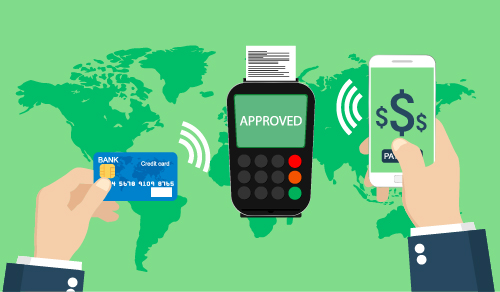Your Payments Terminology Cheat Sheet
The world is in the middle of a tech revolution. And the payments sector is arguably the most affected. Consumers want more control over their finances than ever; and how they pay for items, manage their budgets, and spend money is changing on a daily basis. Traditional financial institutions, such as credit unions, must learn from the rising demand in payment options and adapt.
Fintech is chasing consumers’ digital experience demand. Nearly $60 billion was invested in fintech in the first half of 2018, according to Chris Skinner’s Blog. As a result, new fintech players are popping up every day, and any one of these new technologies could be the next change catalyst in payments. To help busy credit union executives keep up-to-date on the terminology, Worldpay has developed this handy cheat sheet of commonly used terms in the payments market.
Alternative Payment Methods
Methods of payment that are not linked to the global card brand networks such as Visa, Mastercard, or American Express.
Internet Penetration
Internet users are individuals who have used the internet from any location in the last three months. The internet may be accessed via computer, mobile phone, personal digital assistant, gaming machine, digital TV, etc.
Point of Sale
All transactions where the card is present. Also referred to as POS.
In-Store
Often used interchangeably with point of sale, in-store refers to all transactions that occur at the physical point of sale.
Bank Transfers
Consumers pay for goods using an online banking facility. They are either redirected to their bank or select their bank from a provider’s page.
Examples: iDEAL, SOFORT banking, eNETS, Przelewy24, SafetyPay
Cash on Delivery
A transaction in which a payment for goods is made at the time of delivery.
Examples: Merchant and bespoke delivery company services
eInvoices
A platform by which consumers can pay for goods after delivery, without sharing credit card or bank details.
Examples: Klarna, AfterPay
eWallets
An electronic card used for transactions made online through a computer or a smartphone, like a credit card or debit card. When used with a smartphone, consumers store the credentials of their preferred card for payments and use biometrics to authorize the transaction.
Examples: Alipay, Tenpay, PayPal, Qiwi, Yandex.Money
PrePay
Allows consumers to fund a card and make purchases without a credit card or bank account.
Examples: paysafecard, Neosurf
PostPay
When a consumer selects a product online, they pay for it later at an affiliated outlet or store.
Examples: Konbini, Boleto Bancario
Pre-Paid Cards
Consumers load funds on these cards in advance to make purchases or withdraw cash in the same way as a debit or credit card. They run on scheme networks such as Visa and Mastercard.
Example: Virgin Money
Debit Cards
Draw funds directly from a consumer’s bank account and are backed by major card brands.
Charge & Deferred Debit Cards
A pay-later card that charges no interest, but requires the cardholder to pay the outstanding balance in full upon receipt of the statement, typically on a monthly basis. This includes deferred debit cards.
Example: American Express
Credit Cards
Credit cards are backed by major card brands and allow consumers to make purchases on credit.
Other payment methods include mobile carrier billing, crypto-currencies, and other emerging technologies, such as Bitcoin, Zong and BOKU.
